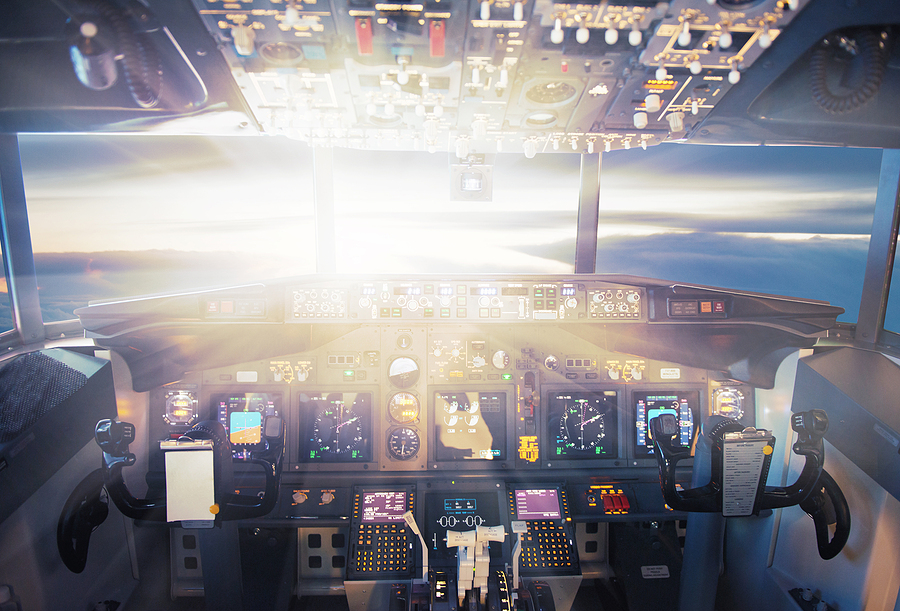Kevin* has been a military pilot for almost 20 years and was looking to make a transition to the airlines soon. However, he has a few medical issues, some new and some old, and was concerned about how they may affect his ability to get his FAA medical certificate. Kevin found Wingman Med through a referral and we set up his initial consultation.
In our first call, Kevin revealed that he has struggled with passing the color vision requirements for the Navy over the years, has had elevated eye pressures since he first entered the military, and recently had Bell’s Palsy. He also mentioned several other minor, historical, ailments that were not of significant concern for an upcoming medical.
We always tell pilots that if they can maintain a flying medical qualification in the military, they should be able to get one with the FAA as well. It just might take a bit of work because they are bringing a decade or more of medical history to the FAA at one time vs the slow addition of things that occurred in the military over a period of years.
Kevin has been able to continuously pass the Farnsworth Lantern color vision test with the Navy. While this is an acceptable test with the FAA as well, it can be somewhat hard to find an FAA examiner who has access to one because they are quite old. With that said, I suggested that Kevin seek out and try some other color vision tests as the FAA requirements are significantly different from those he is familiar with in the Navy. We have a separate article on color vision that goes into detail, but our experience is that not all FAA AMEs are very familiar with the proper way to score a color vision test for FAA standards. It pays to know for yourself.
Kevin’s other eye-related issue, elevated eye pressure, is a longstanding issue for him. In general, elevated eye pressures are concerning for glaucoma. Glaucoma itself is concerning for losing peripheral vision, something that all will agree is pretty important for pilots. But elevated eye pressure, and even mild glaucoma, can be allowed as long as there is no significant vision loss.
These conditions can fall under one of the CACIs. We have discussed a few CACI conditions already, including an introduction to CACI, and will address glaucoma specifically later on. Kevin had done some work in advance and had already requested an optometrist perform a full exam and fill out the relevant FAA documentation. Unfortunately for Kevin, he did not meet the CACI criteria and we let him know this would require a deferment to the FAA. But at least he had all the required paperwork ready to submit. At most he would be looking at a month delay compared to about six months had he not had the required eye exam done in advance.
Perhaps the most concerning thing for Kevin was a recent bout with Bell’s Palsy. Bell’s Palsy is an unexplained episode of facial muscle weakness or paralysis. After reviewing his records, we found that his MRI showed no evidence of other concerns and a neurologist determined he had completely recovered as well as recommended a return to flight status. We felt that this wouldn’t be a significant issue during his exam, but we recommended he bring copies of the MRI report and neurology evaluation to show to his AME in case they were concerned.
The remainder of his more recent and historical medical issues were not of concern from an aviation perspective and we let him know that they would not disrupt his FAA medical certification process.
After carefully selecting an AME, Kevin found a good one. With our aid, Kevin showed up to his appointment fully prepared to discuss his issues and without the apprehension he initially had when he first contacted us. Despite not meeting the CACI requirements for Glaucoma, Kevin’s AME called his regional flight surgeon to get approval over the phone versus having to wait for an answer after document submission.
That approval was granted and Kevin walked out of his exam with his first-class certificate. Had Kevin gone in unprepared he would likely have had to wait a minimum of 6 months for the back-and-forth process with the FAA to get everything completed. He is now ready to submit his airline applications and begin the next stage of his career.
* Name changed to preserve anonymity.
ABOUT WINGMAN MED
We are designated FAA aviation medical examiners, residency trained in Aerospace Medicine, and graduates of the Naval School of Aviation Safety. After years of helping friends and colleagues keep their medical certificates and stay in the air, we founded Wingman Med so we can do the same thing for you.
Follow us on Linkedin.com/company/wingmanmed





